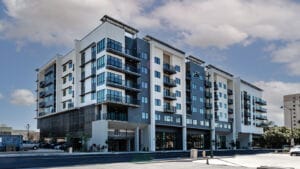Aging population, tough economy drive increase in multigenerational living
There is a good chance that when grandma or grandpa came for holiday dinner, they didn’t have far to travel: likely from the next room.
An aging population — the Alliance for Aging Research says 10,000 baby boomers in the U.S. turn 65 every day — and a still-struggling economy have helped the extended family make a huge comeback. It’s also created a new label: the “sandwich generation,” which describes more than 16 million Americans who care for children and their parents in their home.
A Pew Research Center’s study shows that 16 percent of households have two adult generations living under one roof, a 33 percent increase from a decade ago. From 2009 to 2010 alone, there was an increase of more than 500,000 multigenerational residences.
“With pensions failing and retirees experiencing shortfalls in savings, it’s going to become even more popular,” says John L. Graham, co-author of “Together Again: A Creative Guide to Successful Multigenerational Living.” But believe it or not, aging parents are not the age group most responsible for the trend. That distinction belongs to young adults — especially those ages 25 to 34. In 1980, just 11 percent of adults in this age group lived in a multi-generational household. By 2008, 20 percent did, and the economy appears to have played a significant role. A Pew survey found that among 22- to 29-year-olds, one in eight say that, because of the recession, they have boomeranged back to live with their parents after being on their own.
While the increase in the number of multigenerational homes has presented financial challenges for some of those that find themselves with multiple generations living under one roof, it has presented financial opportunities for contractors who are adding additions or remodeling existing homes, and for realtors and home builders who see a new market opening.
“The demographics are changing, the economics are changing” says Alan Jones, Lennar’s Arizona division president. “More Americans are doubling up and it’s a trend that needs to be addressed.” Lennar addressed the trend by introducing its NextGen home, which the company markets as a “home within a home.”
“Lennar is the first home builder in the nation to address this demographic shift in our country,” says Jon Jaffe, Lennar’s chief operating officer. “Having multiple generations living under one roof is deeply rooted and desired by several cultural backgrounds in the United States. Plus, the aging of America is creating a need to care for parents, and for most people the most economical way to do that is at home. This home within a home design offers privacy for everyone.”
Lennar’s NextGen home has a specific floorplan incorporated into the main house that includes a separate first-floor living space with its own entrance, living area, kitchenette, attached garage, patio and barbecue area. There is a door that accesses the main living area. “Everyone living in the house can then share space as they see as appropriate,” Jones says. “We are actually building a home for the way that people are already living.”




